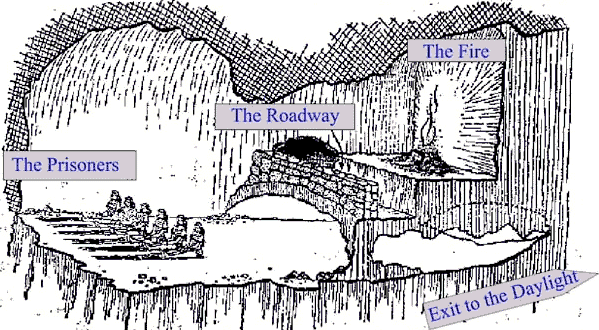
Writing / Question: What is wisdom? How does one gain wisdom? Is it different than being smart? (5 min).Through an in-depth analysis of primary and secondary sources, students in this lesson will identify, understand and be able to explain the story of Plato’s “Allegory of the Cave”, and using that knowledge will then theorize as to what message Plato (and Socrates) might be trying to give to humanity through the timeless dialogue. After Socrates was executed, Plato went on to write and publish stories about his mentor, and he later founded the “Academy”, western civilization’s first organized school, where he and others taught everything from philosophy and literature to science and mathematics. According to multiple sources, Plato had been a poet and a writer before he joined Socrates. Everything we know about the great Athenian philosopher, his “wisdom”, his travels, and his place in Athenian society, comes from later sources written by his disciples.Īlong the way, the master (as Plato called Socrates) acquired a following of men hungry for that knowledge. Historians aren’t even sure that Socrates himself was literate.


Unfortunately, in a somewhat eerie parallel to Jesus of Nazareth, no writings attributed to Socrates survive to the modern age. According to traditions written later about Socrates from his students (including Plato), Socrates was an old stonecutter who one day put down his tools and proceeded to spend the remainder of his life wandering the streets of Athens questioning people and trying to gather knowledge and wisdom. Plato was a student of Socrates, although not in the modern sense of the word. Over the course of his adulthood, he witnessed the collapse of democracy in Athens, then the rule by a tyrannical and violent oligarchy (led by members of Plato’s own family), ultimately followed by the reestablishment of a democratic society that in 399 BC tried, convicted and executed his friend and mentor, Socrates, for corrupting the youth of Athens (including Plato). Plato lived during a turbulent time in Ancient Greece. In this specific dialogue, Socrates (Plato’s main character) speaks with Glaucon, (who in real life happened to be Plato’s older brother) about the nature of average human beings and how they perceive the world around them, the nature of “truth” and wisdom, and ultimately the rejection by most humans of that “truth”, even when teachers (like Socrates and Plato) expose it to them. In these conversations, the master (Socrates – Plato’s teacher and mentor) uses images and stories to prove that human beings have little wisdom themselves, that society overall was corrupt, and that humanity needed a teacher/philosopher (such as Socrates) to show them the way to truth through the “light” of knowledge and understanding.
Allegory of the cave story series#
Like most of his works, Plato’s Republic was written as a series of conversations between Socrates and different characters. Images such as the ones below pepper the work, and at times take readers into an almost dream-like state. Known generally as the “Allegory of the Cave” because of its images, Plato’s story itself is fairly straight forward, although the archaic language can be hard for modern readers to follow. Thus begins Book VII of Plato’s most famous book, The Republic.

Allegory of the cave story archive#
Above and behind them a fire is blazing at a distance, and between the fire and the prisoners there is a raised way and you will see, if you look, a low wall built along the way, like the screen which marionette players have in front of them, over which they show the puppets.įrom Plato, “Allegory of the Cave”, book VII of The Republic, MIT Internet Classics Archive Why is Plato’s “Allegory of the Cave” still studied today, almost 2500 years after it was written?Īnd now, I said, let me show in a figure how far our nature is enlightened or unenlightened: - Behold! human beings living in a underground den, which has a mouth open towards the light and reaching all along the den here they have been from their childhood, and have their legs and necks chained so that they cannot move, and can only see before them, being prevented by the chains from turning round their heads.What is the meaning of Plato’s “Allegory of the Cave”?.What is the story of the “Allegory of the Cave” from Plato’s famous book, The Republic? What are the details behind the story itself?.Where does Plato fit into the story of Ancient Greek Philosophy?.What was Plato’s relationship to Socrates?.Philosophy, World History, Ancient History, European History Grade Level


 0 kommentar(er)
0 kommentar(er)
